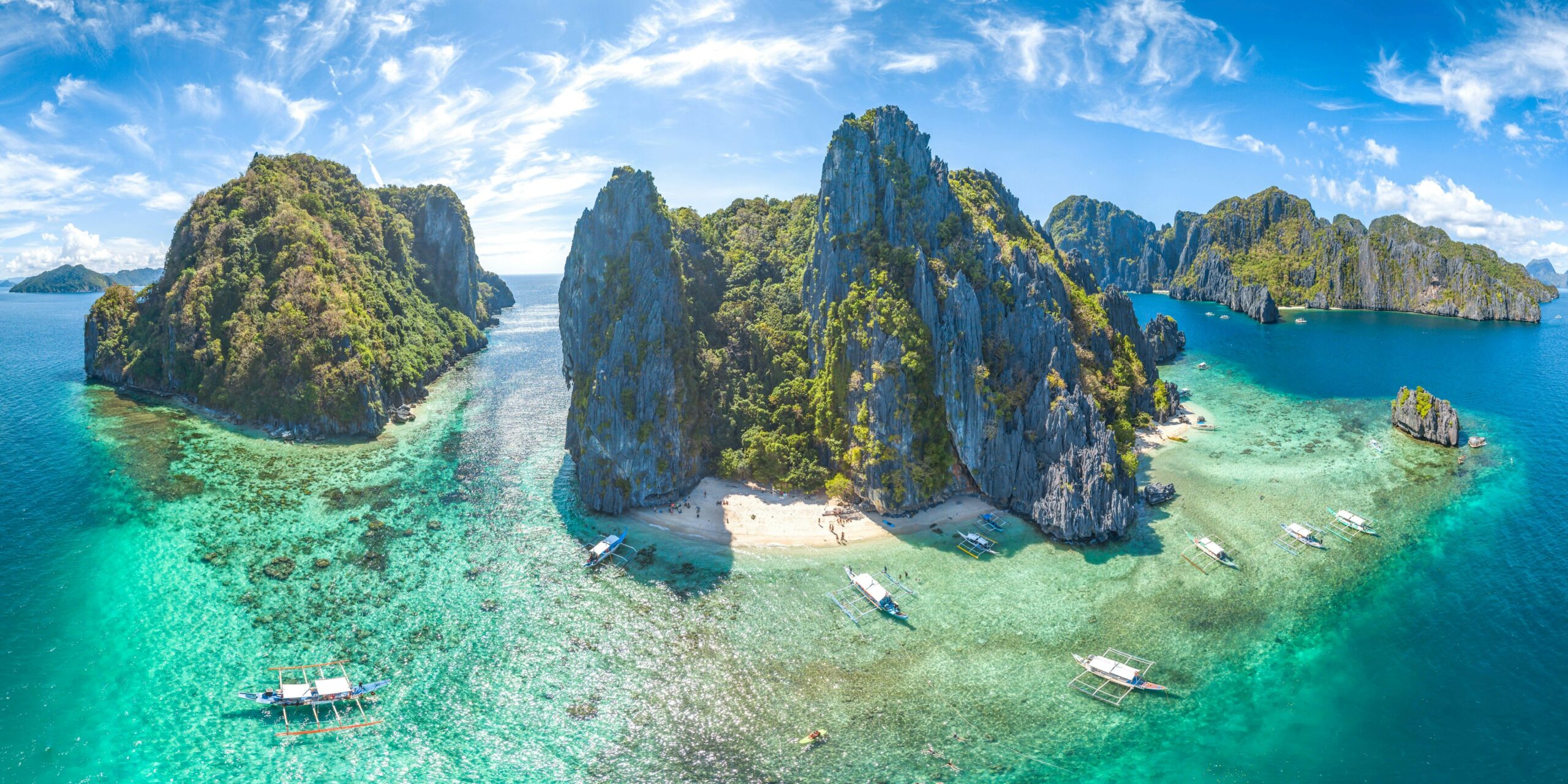The Philippines is a relatively easy travel destination by Southeast Asian standards. English is widely spoken, and the country has an endearing don’t-worry-be-happy vibe, which is soothing for first-time visitors. However, volatile weather and natural disasters can disrupt trips quickly, while a menu of over 7,000 islands creates itinerary challenges for even the most seasoned travel planners. Therefore, increase your chances of a smooth trip by avoiding a few common first-timer mistakes.
Common Travel Mistake #1: Buying into the Fear Factor
Someone back home may have warned you about the dangers of traveling to the Philippines—claiming you’d be robbed, kidnapped, or worse. Consequently, you might have opted for an all-inclusive resort and stayed indoors the entire trip (or worse, chose to skip the trip altogether).
This is a significant error. The Philippines has an unfair reputation for being a ‘dangerous’ destination—myths bolstered by frequent Western embassy warnings and some anxious Filipino expatriates. In reality, the Philippines is just as safe as any other Southeast Asian country. Although there has been violence in some remote provinces in the southern region of Mindanao, it rarely affects other parts of the country or impacts tourists. Be sure to check and stay updated on the latest travel advisories, but once you arrive in the Philippines, you’ll likely appreciate that you didn’t let concerns deter you from this incredible experience. Relax and explore!
Common Travel Mistake #2: Neglecting to Study the Weather
Imagine arriving only to spend ten days battling intense monsoon rains—hardly the tropical escape you were hoping for.
A common misconception is that the entire Philippines shares the same weather. In reality, the country boasts four distinct climate zones. Thus, it’s essential to study the regional forecasts carefully, research the best times to visit, and choose your destination accordingly. For example, Manila experiences a particularly severe wet season from July to September. Conversely, many areas of the country remain dry during that time.
Moreover, be aware of typhoons, which can significantly affect large portions of the country and may occur outside the typical typhoon season (approximately June to December). Consistently monitor websites like Typhoon2000 to prevent arriving during inclement weather; if you find yourself facing a typhoon, consider rerouting your plans.
Common Travel Mistake #3: Overplanning
One cardinal rule of traveling in the Philippines is to assume that things might go awry. Transportation schedules—whether buses or boats—can be notoriously unreliable and may change at a moment’s notice. Moreover, the weather can dampen even the best-laid plans, or perhaps the beach you hurriedly selected just wasn’t what you envisioned. Rest assured, if you stay flexible, you can easily adapt your itinerary if things don’t go as planned.
Outside of the two peak travel periods (New Year’s and Easter), you shouldn’t have difficulty finding accommodations. In fact, you’ll tend to receive better hotel deals if you book at the last minute. Furthermore, transportation through boat and bus tickets can often be purchased at the station on the day of travel. With numerous domestic budget airlines available, travelers can find relatively inexpensive plane tickets even close to their travel date.
Common Travel Mistake #4: Dissing a Person’s Karaoke Skills
Karaoke is the national pastime in the Philippines. Therefore, it’s likely you might find yourself holding a microphone while attempting to sing ‘Yesterday’ or ‘My Heart Will Go On.’ Don’t stress about sounding off-key; Filipinos are generally understanding and appreciative of any effort in cultural participation.
However, it’s essential to remember that this respect is mutual. Skilled karaoke enthusiasts should also uphold a positive atmosphere for those who may not sing as well. Karaoke is a serious source of entertainment in the Philippines, so join in the fun and enjoy the experience without any judgment.
Common Travel Mistake #5: Losing Your Cool Over a Few Extra Pesos
In the Philippines, raising your voice or displaying frustration leads to loss of face for both parties involved. Consequently, it’s best to manage expectations regarding prices. The Philippines is among the most affordable travel destinations globally, particularly when compared to Europe and the US. So when a taxi driver in Manila asks for an additional US$1 to US$2 during peak hour traffic, it’s wise to consider this an acceptable surcharge and maintain your composure instead of letting the situation frustrate you.
Common Travel Mistake #6: Arriving On Time for Social Engagements
If a friendly local invites you into their home for dinner, do not be surprised if arriving promptly results in an awkward atmosphere.
In the Philippines, it is considered rude to arrive exactly on time. If you find yourself punctual, it’s possible you’ll be the only guest, and your host may not yet be prepared. A delay of about 15 minutes is often viewed as the socially acceptable arrival time.
Common Travel Mistake #7: Assuming Private Accommodation is a Better Deal than Hotels
In an attempt to save money, you might have paid US$50 for an Airbnb in Quezon City (a remote suburb of Manila).
This could be an unwise choice. Do not assume that Western pricing applies in the Philippines’ two major urban areas, Manila and Cebu. Accommodation in Cebu offers excellent value, averaging P1500 to P2500 (approximately US$30 to $50) for respectable midrange hotels. Prices in Manila are slightly higher, with decent double accommodation averaging P2800 to P3200. Additionally, know that Manila can be intimidating for first-time visitors; a concierge may ensure a smoother experience than navigating a private apartment by yourself.





